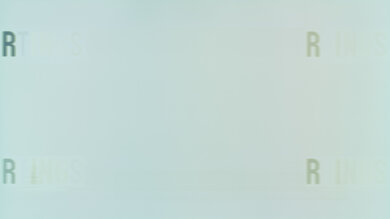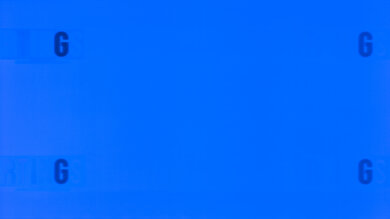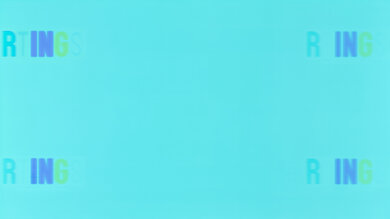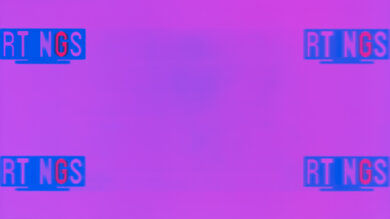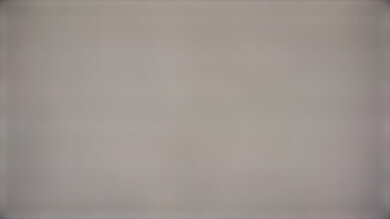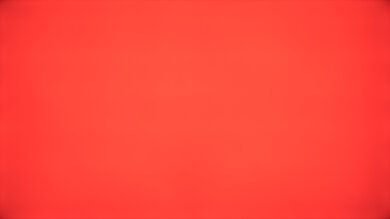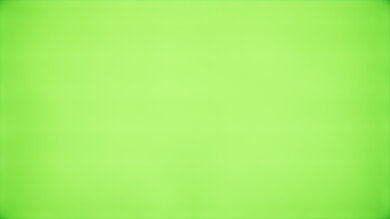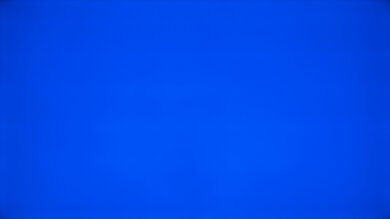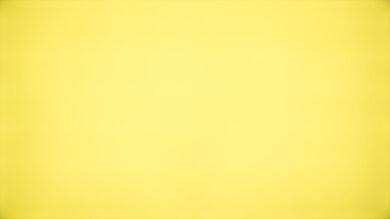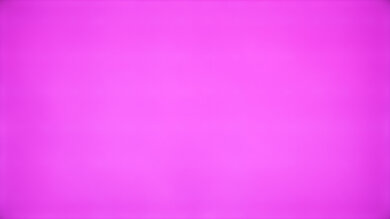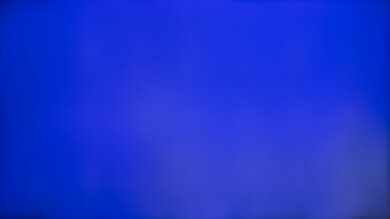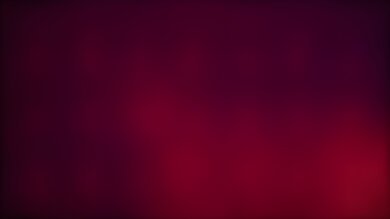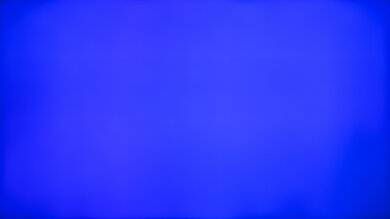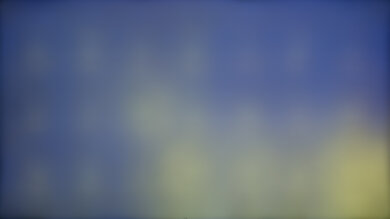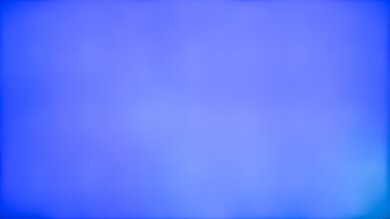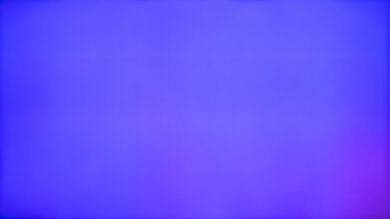On August 31, 2017, we started a long-term 20/7 burn-in test on 3 TVs (OLED vs VA vs IPS). Our goal was to see how their performance changed over time, especially with static images like network logos, black bars in movies, or video games with a fixed interface.
We already test for temporary image retention, which generally subsides over a few minutes. It's a temporary annoyance and results in some faint artifacts usually visible in high-contrast areas.
Permanent image retention is a more serious issue, but it requires looking at the TV's performance over months or years. We tested three TVs side-by-side, the OLED LG B6, the VA Samsung KU6300, and the IPS LG UJ6300 in a two-year-long test.
This test was supplemented by our real-life OLED burn-in test, which started in January 2018. Both burn-in tests have now ended.
Update 02/22/2023:
We've started a new 100 TV accelerated longevity test, and one goal of that test is to better understand how well modern TVs handle image retention and burn-in. You can learn more about how we designed and built this test in our latest video. Follow along for our updates over the next two years on our new RTINGS com R&D Channel.
Update 11/17/2022:
This test ended in 2019, as we feel that we now have a good understanding of what types of content are likely to cause burn-in. However, we still haven't addressed the issue of longevity in general, and we don't know if newer OLED panels are still as likely to experience burn-in. To that end, we've decided to start a new accelerated longevity test to better understand how long new TVs should last and what are the most common points of failure. Although burn-in isn't the main goal of this test, we're hoping to better understand how newer OLED panels compare to the older generation of OLEDs. It's generally accepted that burn-in isn't as much of an issue as it used to be, but it's unclear just how much better the newer OLED TVs are. With new panels, new heatsinks, and even brand-new panel types like QD-OLED, there are a lot of unknowns.
Update 3/4/2022:
The 20/7 burn-in test ran for about two years, from August 31, 2017, until November 15, 2019. The goal of this test was to see whether burn-in could happen for the three most popular TV types (VA LCD, IPS LCD, and OLED). These are the results of our experiment:
- Long periods of static content will cause burn-in on OLED TVs. The red sub-pixel appears to degrade the fastest, followed by green and blue. The effect is cumulative, as even cycled logos do burn-in (but over a longer period). We investigated this further in our Real Life OLED Burn-in Test.
- There are no signs of burn-in on the two LCD TVs (IPS and VA type panels).
- The 'Pixel Shift' option on the OLED LG B6 can help spread static content over more pixels (so each pixel displays the same content for less time), but it's not as effective for our large logo. It may be helpful for very small static areas.
- Black letterbox bars were displayed for almost 5,000 hours (equivalent to 208 days of continuous letterboxing). Some letterboxing is starting to become noticeable on full-screen slides, but not in normal content. As a result, we don't expect letterbox bars to cause any issues for people. It's due to the uneven aging of the screen. The black portions of the screen haven't aged as much as the rest, so those dark areas appear brighter in regular content.
- Some of the LED backlights of the UJ6300 died, so the image is unwatchable. To keep a constant brightness of 175 nits across these TVs, the UJ6300's backlight was turned up to maximum, while the other TVs achieved this brightness at a lower backlight/OLED Light setting. It may mean that it has been operating at a higher temperature, contributing to the failure.
- The color gamut of the B6 and UK6300 hasn't changed appreciatively.
Test Setup
The TVs were placed side-by-side in one of our testing rooms, as shown to the right. The TVs stayed on for 20 hours a day, seven days per week, running our test pattern in a loop. They were turned off for 4 hours each day using USB infrared transmitters connected to each TV and controlled by a PC to better represent normal (but still very heavy) usage. On the B6, the 'Pixel Shift' option is enabled. A single Android TV Box was used as a source, with an HDMI splitter used to provide the same material to each display.
We used our calibration settings, as shown on the review page below, but with the backlight adjusted to reach 175 nits on our checkerboard pattern and no white balance settings applied.
The Pattern
A 5.5-hour video loop was used as the test pattern. It was designed to mix static content with moving images to represent typical content. The base material is a recording of over-the-air antenna TV with an overlay of RTINGS logos of different opacities and durations and added letterbox black bars. These additional elements are:
- Top and bottom: Letterbox bars present for 2 hours, then absent for 3.5 hours (movie example)
- Top left: 100% solid logo, present for the whole clip (torture test)
- Top right: 50% opacity logo, present for the whole clip (network logo torture test)
- Bottom left: 100% solid logo, present for 2 hours, then absent for 3.5 hours (video game example)
- Bottom right: 50% opacity logo, present for 10 minutes, then absent for 2 minutes (sports or TV show example)
Weekly Updates
Each week, we performed the following procedure:
- Turn off all TVs and perform the 'Clear Panel Noise' function on the OLED B6
- Measure the HDR Peak Brightness at maximum backlight/OLED light
- Measure the Color Gamut in the Rec. 2020 color space with an HDR10 signal
- Adjust the backlight/OLED light to read 175 nits on the checkerboard pattern
- Take photos of 50% gray, 100% red, 100% green, 100% blue, 100% cyan, 100% magenta, and 100% yellow patterns
Results (Last updated 02/10/2020)
HDR Peak Brightness
Color Gamut (Rec 2020 % xy)
Uniformity Photos
Limitations of the test
- Small sample size, so it won't show the variance between units of the same technology
- Extreme case, where TVs are running 20 hours a day with the same 5.5 hours loop. You will get a better lifespan at home if you use the TV less and with more varied content.
Conclusion
The goal of this test is to get more information on the burn-in issue on TVs and how it affects their lifespan. We will have more information in the next few months on how it should impact your buying decisions.
Changelog
Week 114 (12/18/2019): All measurements and uniformity photos have been updated.
Week 110 (11/15/2019): The burn-in test was resumed on 10/17/2019. Photos have been retaken today after four more weeks. The summary above has been updated after almost two years of operation.
Week 88 (05/31/2019): All uniformity photos have been updated. Next full measurement of uniformity, brightness, and color gamut will be 06/28/2019.
Week 84 (05/06/2019): All measurements have been updated.
Week 80 (04/04/2019): We have taken uniformity photos of each TV. The TVs are now at approximately 11,000 hours of on-time and the LEDs of the LG UJ6300 continue to degrade.
Week 76 (03/07/2019): Uniformity photos and brightness/color gamut measurements updated. The color gamut of the UJ6300 continues to decrease as the image becomes more washed out, and the brightness continues to fluctuate. Due to the slow rate of change of results, we will be decreasing the rate that photos are taken of the screen to every four weeks, instead of every two weeks. The next uniformity photos will be taken 04/04/2019.
Week 74 (02/21/2019): Photos updated. The LEDs of the UJ6300 continues to degrade.
Week 72 (02/07/2019): Uniformity photos updated.
Week 70 (01/24/2019): Photos updated.
Week 68 (01/11/2019): All measurements have been updated.
Week 66 (12/13/2018): Photos updated.
Week 64 (11/29/2018): Uniformity photos updated.
Week 62 (11/15/2018): Uniformity photos have been updated.
Week 60 (11/05/2018): Brightness and gamut measurements updated and uniformity photos taken. The back-lighting system of the UJ6300 appears to be failing and this is resulting in color shift, decreased brightness, and bad uniformity issues. This is most noticeable in the 50% gray slide.
Week 58 (10/18/2018): Photos updated. The IPS UJ6300 continues to show darker areas and discoloration.
Week 56 (10/04/2018): Uniformity photos updated.
Week 54 (09/20/2018): Uniformity photos have been updated. The UJ6300 is showing darker areas on the screen visible in the 50% gray slide. This appears to have been increasing over the past few weeks.
Week 52 (09/07/2018): It has now been one year since the start of the 20/7 burn-in test. We have included a summary of the results so far below.
Week 50 (08/23/2018): Photos updated.
Week 48 (08/09/2018): Photos have been updated.
Week 46 (07/27/2018): Uniformity photos have been updated.
Week 44 (07/13/2018): All results have been updated including peak brightness, color gamut, and uniformity photos. The peak brightness and color gamut measurements remain in the same ballpark for all TVs.
Week 42 (06/28/2018): Uniformity photos updated.
Week 40 (06/14/2018): New uniformity photos have been taken for each TV.
Week 38 (05/31/2018): Uniformity photos have been updated.
Week 36 (05/18/2018): All results have been updated including uniformity photos, color gamut measurements and peak brightness measurements. Brightness and color gamut are in the same ballpark. Next uniformity photos update will be 05/31/2018 and next full update is 07/12/2018.
Week 34 (05/04/2018): Uniformity photos have been updated.
Week 32 (04/19/2018): Results updated. The TVs have been mounted on the wall next to the real life OLED burn-in test. The photos appear slightly different, but this doesn't affect the appearance of burn-in.
Week 30 (04/05/2018): Uniformity photos have been updated.
Week 28 (03/23/2018): Peak brightness, color gamut and uniformity photos have all been updated.
Week 26 (03/08/2018): New photos taken. Retention in the IPS TV is becoming apparent.
Week 24 (02/22/2018): Uniformity issues continue to progress.
Week 22 (02/08/2018): Results have been updated.
Week 20 (01/25/2018): Uniformity and color gamut/peak brightness results have been updated. From this point, we will adjust our measurement cadence to match the Real life OLED burn-in test. The next uniformity photos will be posted week 22 (02/08/2018) and the next color gamut/peak brightness measurements will be posted week 28 (03/22/2018).
Week 19 (01/18/2018): Results have been updated.
Week 18 (01/11/2018): The uniformity photos have been updated. When looking at the solid logo of the B6, some color shift is noticeable. This may be due to the different rates of sub-pixel degradation.
Week 16 (12/22/2017): Results updated.
Week 15 (12/14/2017): New results posted.
Week 14 (12/07/2017): Uniformity photos updated.
Week 13 (11/30/2017): No significant changes to brightness or gamut.
Week 12 (11/23/2017): Uniformity photos updated for week 12
Week 11 (11/16/2017): New results have been posted.
Week 10 (11/09/2017): The results have been updated.
Week 9 (11/02/2017): Screen photos have been taken and the color gamut and peak brightness tests have been performed. Burn-in continues to develop on the B6, however the peak brightness and color gamut remain in the same ballpark.
Week 8 (10/26/2017): The LG UJ6300 has received a firmware update (04.70.03). Retention continues to become more visible on all four corners of the red and magenta slides.
Week 7 (10/19/2017): New screen uniformity photos have been taken. Retention is visible in all 4 logos on the B6.
Week 6 (10/12/2017): The screen uniformity photos have been updated, and the retention issues continue to develop on the B6. Because no changes to peak brightness and color gamut have been observed so far on any TV, the frequency has been reduced to every 4 weeks. As a result, the next peak brightness and color gamut update will be 11/02/2017.
Week 5 (10/05/2017): Image retention continues to develop on the B6. OLED Light/Backlight settings B6-63, KU6300-7, UJ6300-100.
Week 4 (09/28/2017): Some retention is visible on the LG B6 OLED in purple, red, green and blue slides. OLED Light/Backlight settings B6-63, KU6300-7, UJ6300-100.
Week 3 (09/21/2017): No significant changes since week 2. OLED Light/Backlight settings B6-63, KU6300-7, UJ6300-100.
Week 2 (09/14/2017): The B6 has received a firmware update (05.30.03). There are beginning to be signs of permanent image retention at the static logos in each corner. The brightness and color gamut measurements are all within measurement variance. OLED Light/Backlight settings B6-63, KU6300-7, UJ6300-100.





